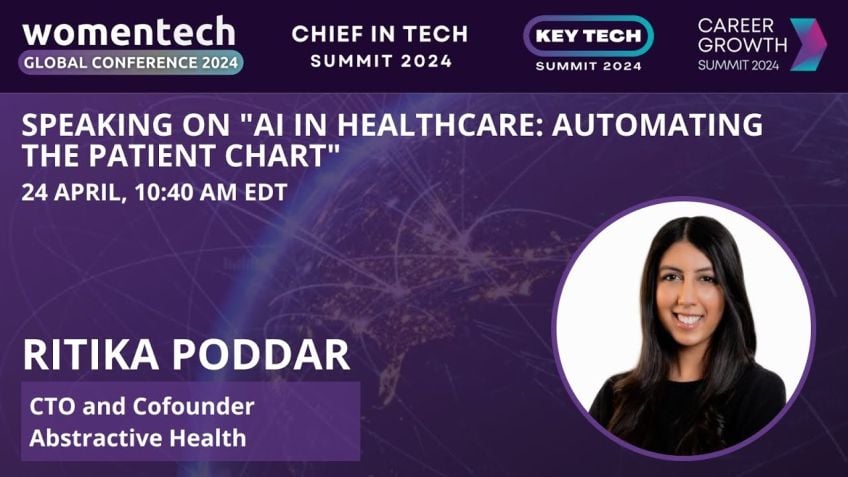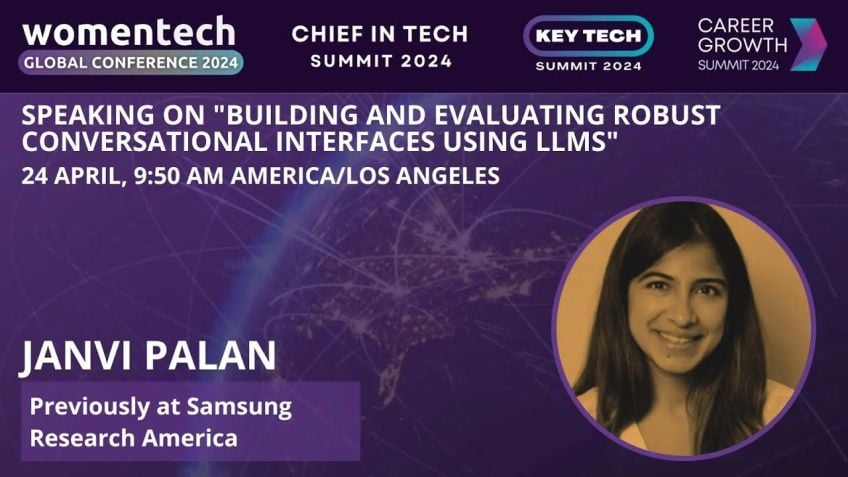Recommender systems and women shoppers by Dhanashree Balaram
Machine Learning Models: Retail Systems, Women Shoppers, and Recommendation Bias
Hello, I am Dhanush Sh Balram at Lily AI, a retail technology startup, where we delve into women's apparel data through our work with data science and machine learning models. Today, I will walk you through a somewhat intriguing topic - the interplay of recommender systems, user experiences, and unintentional biases that can surface on women's shopping journeys.
The Shopping Journey: An Overlooked Perspective
Understanding the consumer journey is crucial. For instance, consider a woman's journey in a conventional store, planning to buy a summer dress. She first notices the broad categories, like sales or new arrivals, picks dresses in her size from these sections, shortlists them based on her preferences (fabric, sleeve length), and makes a purchase decision. She might return the product or enjoy it, forming the full cycle of her shopping experience.
We can draw parallels between these stages and the phases of recommendation systems, where a user's choices, their preferences, and the product data shape the recommendation journey.
Recommendation Systems: The Technical Unfolding
Picture this scenario applied to an online retail platform. You search for a summer dress, apply filters (price range, size, length), which guides the system toward the candidate generation phase. The system cross-references your user intent with its product inventory to suggest a list of potential items.
Next, the recommendation model re-ranks these candidates based on user preferences and other product information. Your decision to purchase a product or not feeds back into the recommendation model. With the help of machine learning, the system can learn from any feedback, ensuring a continuously improving and tailored user experience.
Inference From Data: A Delicate Balance
With 86% of women reported being dissatisfied with their bodies according to an article by Center for Change, there's a socio-cultural benchmark for women implicitly present in user data that tends to seep into machine learning models. This data-infused bias could lead us to infer the user's body type, color preferences, behavior, even predicting size changes over time. Navigating this data ethically to avoid any undesired inferences about the user becomes an essential concern for algorithm designers.
Pros and Cons: A Double-Edged Sword
Pros:
- Quick and suitable options benefiting the user's online shopping experience.
- Enabling users to explore their fashion preferences through personalized outfit recommendations.
- Providing a virtual personal shopper who understands the user's style preferences.
Cons:
- Unsatisfactory recommendations leading to disrupted shopping experiences.
- Unhealthy reinforcement of social bias that could potentially harm the user.
- Propagating pre-existing social bias, leading to unequal representation within outfit recommendations.
Algorithms in Existing Recommendation Systems
Collaborative filtering and content-based filtering are the two primary forms of recommendation systems. Both these methods have their strengths and shortcomings, focusing on different aspects such as genre preferences or a collective group's behavior, sometimes missing the spark of surprise or personalization detail.
Contextual Bandits: A Blend of Exploration and Exploitation
Contextual bandits emerge as a potential solution, acting as a blend of both methods. The model can exploit known user preferences or explore other options. This allows the system user to become a more dynamic entity, its context can imbue varying biases. Thus, effecting variation in the machine's decisions accordingly.
Towards A Bias-Free Future
Without denying that ML models carry biases, it's also true that steps can be taken to minimize their manifestation. Here are a few:
- Acknowledge existing bias and make algorithm decisions transparent.
- Construct independent models to detect and mitigate bias.
- Invest in the field of explainable AI.
- Explore frameworks like Algorithm Impact Assessment.
Leaving you with an impactful quote from Microsoft, "Tech succeeds when users understand the product better than its designers." It should always be our goal to make machine learning and its functions clear and comprehensible to our users, for they stand at the forefront of every decision we make.
Video Transcription
Um Welcome everybody. Uh My name is Dhanush Sh Balram and I'm gonna be talking about recommended systems and women shoppers. Um I currently work at uh Lily A I which is a start up that works with retail space, data and machine learning models.And I come across um women's apparel data in my everyday work. Uh And so before this, I worked for a company called Adobe and I worked on the recommender system and search problem. And so combining uh what I learned before with some of the data that I work with on an everyday basis, seemed like an interesting talk. Um So without further ado, let's get started. Um So when you think of the search and recommender system, let's step back from the technical uh initially and look through a woman's journey uh through a shopping experience. So let's start with uh OK, what, what is the reason I go to the mall or to a to a big departmental store? Let's say I wanna buy a summer dress, right? And then the first thing that I noticed when I go into a store is that there are broad categories uh in and around the store.
So there could be a place called the sales, the sales place that could be a place which is related to new arrivals and some places with specific brands. And so I pro I could probably get a summer dress at any of these broad locations. And so I browse around all of these places. I look for my size and then I put a bunch of summer dresses into my bag. And then after this journey, I go on to shortlist and try a bunch of outfits, right? So based on like my preferences in terms of, OK, how do I want the fabric to look? Um You know what uh do I want sleeveless, a sleeveless uh summer dress or do I want something that's knee length? So my preferences come into the picture here and then I shortlist a bunch of outfits to try and then the final stage of making a decision about whether I'm gonna buy something or I'm gonna leave the store. And when I make that decision, I could either return it or I could be happy with my decision, right? So that's the entire process of going through um a, you know, a shopping experience uh for me as a woman and I'm sure it's, it's true for a bunch of, of you out there.
So let's say we take a step into the technical now and look at how a recommender system is designed and what happens when you search for something online. So you're looking for a summer dress within, you know, any retail platform that you go to online and then you add in some filters like, ok, you know, cost size length and then this information is taken into a candidate generation phase. And here it takes in information about all the products, all the inventory that exists in the store and it takes your user intent and produces candidates. And now here I said 20 but in, in reality, it's about 304 100 candidates that are generated that just match your user intent. And now once you get that, those 304 100 candidates that gets inputted into the actual recommendation model, which does some of the re ranking that I talked about. So this would uh look into the user's preferences, it would look at some extra product information and then it would add all of that together and then make a recommendation and say, OK, in the first page, we're gonna show this to the user in the second page, we're gonna show this to the user.
And so all of that information comes in out of this model. And then the decision that's actually in the hands of the user becomes a feedback for the recommended model. And so if we get a feedback that we don't like, we can go in and then change the recommended model and it can update itself, right. So you can see how um the phase of shop, the different phases of shopping and the different phases of a recommended system are highlighted here and how the data about the products, the data about the user and their intent is kind of interlocked with every process of decision making, right?
So let's get into that data and what we're trying to infer from that data. So I let me digress a little bit. So I read this quote somewhere that said in an article uh from Center for Change that says that 86% of all women are dissatisfied with their bodies. Some girls assume there is something wrong with their bodies when they cannot fit consistently into a standard size. And you must be wondering why I brought this up in in a technical conference talk, right? This is basically talking about how society has standards for women and that is present in in the user data and that comes through into the models and that's what we see happening now a lot with machine learning, right? So what do we actually infer using this data? We can infer the body type and the shape of a person, we can figure out what colors they liked and we can also understand their behavior in terms of engagement factors. So, are they adding a lot of things to the car? Are they actually buying what they add to the car and what becomes an ethical quandary for me all the time? Is we can actually predict if their size changes over the years, right? And this might not be something the user wants us to know.
And we can also predict their future size and preferences. And so how do we use the inference from data to do this in an ethical way such that we're only thinking about the user's content and not about drawing inferences about the user that they don't want us to draw. Right? So let's look at some of the pros and cons of using this data and and how it could steer the journey for a user. So some of the pros I al I always like good news before. I like bad news. Uh So it's you get quick and suitable options for your recommendations and and everyone loves recommendations because of this, right? Um And it, I I feel like clothing is a form of expression and so giving inspiration and allowing people to explore their journey through clothing and through retail is it is incredible, right? And of course, who doesn't like a personal shopper, someone who knows what you like, what you don't like, you know, I don't like things that are uh tight on my arm, but I like things that, you know, are loose at the waist, things like that.
So a personal shopper is ideal and some of the cons are, are the big ones. One is the recommendations could be unsatisfactory and you know, it just the user's journey is just disrupted in that case, right? And then it could steer the user down a mentally dangerous path. Now, let's say AAA woman is struggling with an eating disorder and then you recommend outfits to that person that help establish the social bias that exists and it pushes that person down a mentally dangerous path. And so this is also seen in terms of, you know, video entertainment platforms. So and hence this thing brings me to the next point which is propagating social biases. So an outfit could be recommended to a certain minority section of the women community and not to another section.
And you know that just propagates what what exists in the world, right? And so now that we have heard about the pros and cons of this data, how is it actually working? Like where is this data coming in? Is it implicit bias? Is it explicit bias? How do recommendation systems work? So let's talk about that. So let's talk about some existing recommendation system algorithms, right? Uh Basic recommender systems is collaborative in content filtering. Uh This these are ways for the candidate generation process that I mentioned.
So we use the user preferences to predict what they might like. And contextual bandits is a way of recommending in an active way. So we get active feedback from the user. And so I would like to discuss these two because contextual bandits has really picked up speed in the last couple of years, everything else that I've mentioned on the slide is equally important. I just don't have time to get into them right now. So I would encourage you to read uh about it. And so let's talk about collaborative and content filtering first, right? So content based filtering is basically saying that OK, a person likes a particular video or a particular movie and we have a library of movies of particular, of different genres. And we pick a genre that's something that the user likes. And we could say with certain, certain, with certainty that they would, you know, like that particular uh genre or movie. And so what we do in the retail space, right? Taking this back is we create a user profile and say, OK, this user has bought so many outfits, we can create a profile about them saying that OK, they like casual outfits, they like summer outfits, but they don't like party outfits and then we can compare it to the product profiles that exist in our inventory.
So let's say this blue colored outfit here is the casual and a summer outfit, but it's not a party outfit and it seems to align with the user's interest. So we can predict and we can recommend that. And so this is this is how you know, you can address like a niche audience with the user and say, OK, this person really likes party outfits, let's recommend only party outfits and this is great, right? It works really, really well. But what is missing here, what's that one thing that, that magic moment of serendipitous recommendations that's missing, right? And so the user always gets what they expect, but they're not surprised or they're not like, oh my God, I was just thinking about this and you know, this machine showed it to me. So the next way of performing uh candidate generation is collaborative filtering. And this basically says that OK, users that watch that, that maybe read similar articles are similar. So let's say some people read a particular set of articles and then 11 of them reads a article. It's pretty likely that the others would want to read that article as well and you can see that little social bias creeping in here, right? And so how does this work?
Um We don't have a user profile, we don't have a product profile here, but we just take all of it and push it into one space, right? Like this. So you have the users and you have how much they like a particular article when they're shown it, right? So these empty spaces here basically symbolize that they've never seen this recommendation before or they've never interacted with this product. And so you can see that user A really likes outfit number one and so does user B, right? And they don't have anything similar uh any other similar rankings, but user A and user c both ranked outfit number two and they ranked it pretty differently. So one person does not like it and one person really likes it. So we can use that information to say that, OK, this these two people are similar, but these two people are not similar and use that similarity to estimate these missing blocks and say, OK, this person might rank this as a 515. So you know, we should show it to them. And so you can ex you, you you can use these uh you know, the neighborhoods of the people or you can even use the neighborhoods of the products themselves because this is now a combined space. And so you can use item item or, you know, user user similarities in order to figure out these missing blocks.
And so this provides like, you know, like, oh my God, that, you know, I wasn't thinking of this and it showed me a recommendation but what is still this thing here? Yes, we we get to know the user's neighborhood and everything, but something that's missing here is we don't know what the every individual user's preference is. It's not personalized, super personalized to them, right? The entire group gets a certain set of recommendations, but it's not even taking into consideration the product, right? It's not saying OK, this product has this type of fabric, it has sleeveless, it's got uh this type of pattern. And so all of that information is missing, which brings me to the next phase that is contextual bandits. And um this is a way to solve the multi arm bandit problem, which is a really neat uh uh It's a really neat uh uh mathematical problem, but let me try to bring it down to just the retail space. So let's say you have a bunch of um recommendations that you could give to a, a set of users and let's call these recommendations arms because you know, you can, you can pick them.
So let's say we have to figure out how to recommend something to a user, a specific user. OK. And let's say uh picking a particular user is a set of actions or picking a particular recommendation is a set of actions and you're trying to find the set of actions that maximize user engagement and satisfaction. And now you can do this because you know something about the user, you have some context that's feeding into this system, right? And so let's say we recommend these first three outwit outfits and we're trying to figure out whether we should recommend this last outfit here, which is the party outfit, right? How do we do that? We estimate the expected odds that the user would, that, that speci specific user would like that outfit. And so the product data that's going into this is basically OK. This is a glittered outfit. It's got a sweetheart neckline and let's combine that with the user's context that we have and estimate an expected reward that we would get if we recommend this to the user, right?
And so let's say we get some immediate feedback from the user saying, OK, they like the first two but you know, they didn't like the third one and we expected them to like it. So how do we update our model? So it has two options here. The model has two options. It can either say, ok, this person liked blue colored outfits before. So let's just exploit what we, you know, the information that we have and then just show them blue outfits, uh or blue dresses. It can also explore different options and say, ok, they didn't, it didn't like this, but they could recommend something else, right? And so you can see how implicitly the context feeds in bias into the model. It's not like we're inferring things like, ok, this person has this type of body shape, but you can see how things in their context would implicitly creep in here and allow the ma machine to make different uh you know, updates about the about them and about what they would like to be recommended.
And so looking ahead, I don't want to leave this at a point where, you know, we have no solutions. I wanna say that there's hope and I love machine learning and I, and we should try to move towards a space where we can explain machine learning and, and uh you know, explain what we want to do with it, with this bias and how to eliminate it. So that is good news. Um First, I think the most important thing is to acknowledge the bias that we have in machine learning models and the data and, and deep dive into our individual data in each of our companies and see what we're in inferring from that data because every bias and everything, every data is different, right?
And so we as algorithm developers and designers have to be very transparent about the decisions that our algorithms are making. And so one idea I could think about is making a separate model that actually detects that bias and helps mitigate it. And then of course, there's a lot of research in, in, in explainable A I and I encourage everyone on this call to read it, read about it. And there's also this new uh framework called the algorithm impact assessment framework. It's uh uh by the New York University's A I now institute. And so what it does is the input to this is an algorithm and the output is a statement of how it actually impacts environment privacy, human rights. And I think it's fantastic and, and that's the need for the hour. So what I would like to leave you all with today uh is one of my favorite quotes by uh Rich from Microsoft. It's tech succeeds when users understand the product better than its designers. So this basically says that the users are the biggest stakeholders in everything that we're doing. And if we don't explain to them why they're seeing a certain recommendation, they cannot give us the feedback that we want to improve the models or to eliminate the bias. So they are at the forefront and everything we do should be around what the user wants and help the user understand what machine learning is and what it's doing to help them.
And so with that, uh I, I conclude the 15 minutes of my talk and uh I'm open for about three or four minutes of questions and answers. Um I see a couple of comments. Oh, no, I missed everything. I'm sorry. Uh Oh wow. Yeah, these are great points, great comments. Everyone. Does anyone have any questions for me? You're very welcome. I'm just gonna stay on the call for a couple of minutes. If anyone has any questions or wants to chat about anything. If anyone has any comments, I'd be open. Thank you. Thank you. Yes, of course. I will share some resources on the event chat in case anyone wants it and then I can share my slides as well if anyone wants to use it. Yeah, that's an interesting thought. So thinking about bias, I think Mary asked a question about uh that she saw that at a conference uh that removing bias from data would actually bias the data so I would, I would agree with that in certain aspects, but I don't think that removing social impact bias from the data would impact our machine learning models very much.
Yeah, that would be my opinion about that. Um It would be interesting to see what the people at the A I conference uh had to say about it. Yeah, thanks. Thanks for sharing. Yeah, I definitely agree. People seem a little rigid about uh what can happen and what you know. Yeah, that's so the question uh about how to reduce bias. Now again, it's like, how do you remove bias from society? Right? It's a very philosophical question. But in terms of machine learning, I think it's uh understanding um where that noise is coming from and how to remove the noise. And so there are different approaches uh that can be used mathematically to model uh you can model society so you can model its bias, right? And if you can model its bias, you can take the bias out of the modeling. Yeah. Yeah. Yeah, youtube is trying to do that and Amazon as well. They found that there's a lot of gender bias in the uh resume selecting profile and they actually eliminated it. Uh I, I don't, I think there's a paper out there. In fact, let me share it with you all. But, but thank you for all the comments. I think with that time, I wish I could answer everything there there's so many comments and thoughts here. Um But thank you for your time and I appreciate, I appreciate it. Thank you.





